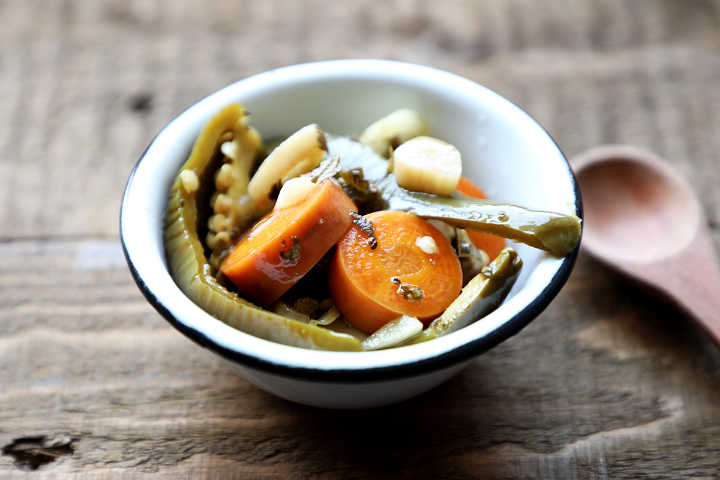Few foods capture the bold, vibrant essence of Spanish cuisine quite like pickled peppers. Known locally as pimientos en vinagre or guindillas en escabeche, these colorful, tangy delights are a staple in tapas bars, home kitchens, and gourmet markets across Spain. Whether served alongside olives, cheeses, or cured meats, Spanish pickled peppers add a burst of heat, flavor, and freshness that brightens any dish.
In this article, we’ll explore the origins, varieties, preparation methods, and culinary uses of Spanish pickled peppers — and why they deserve a place in every food lover’s pantry.
A Brief History of Spanish Pickling Traditions
Pickling is an ancient preservation method that has played a vital role in Spanish gastronomy for centuries. Long before refrigeration, households across Spain relied on escabeche — a method of preserving vegetables, meats, or fish in vinegar and spices — to extend their shelf life.
The Spanish adaptation of pickling was influenced by Moorish, Roman, and Mediterranean culinary traditions. The technique not only preserved food but also infused it with the tangy, aromatic essence of vinegar, garlic, bay leaves, and peppercorns. Over time, peppers became one of the most beloved ingredients in this art of preservation.
By the 16th century, after peppers were introduced to Europe from the Americas, Spain quickly embraced them. From sweet bell peppers to fiery guindillas, the Spanish turned these vibrant vegetables into flavorful condiments through pickling — a tradition that continues today.
Types of Spanish Pickled Peppers
Spain produces a remarkable variety of peppers, each with distinct heat levels and flavors. Here are some of the most popular types used for pickling:
1. Guindillas
Perhaps the most iconic Spanish pickled pepper, guindillas are slender, mildly hot green chili peppers grown mainly in the Basque Country. Pickled in white wine vinegar and salt, they have a gentle tang and a pleasant bite, making them a favorite in pintxos (Basque-style small snacks).
2. Piquillo Peppers
These sweet, red peppers from Navarra are typically roasted and packed in olive oil, but some regional recipes pickle them for extra zest. Their smoky-sweet flavor makes them ideal for gourmet tapas.
3. Ñora Peppers
Small, round, and deep red, ñoras are usually dried, but some variations are lightly pickled to add complexity to stews and sauces.
4. Mixed Pickled Vegetables (Encurtidos)
In many Spanish households, pickled peppers are combined with other vegetables like carrots, onions, gherkins, and cauliflower. This medley, called encurtidos, is served as a vibrant side dish or tapas plate.
How Spanish Pickled Peppers Are Made
Making Spanish pickled peppers is a simple yet rewarding process. It involves balancing acidity, saltiness, and spice to achieve that perfect harmony of flavors.
Ingredients Typically Used:
- Fresh peppers (guindillas, bell peppers, or a mix)
- White wine vinegar or apple cider vinegar
- Water
- Sea salt
- Garlic cloves
- Black peppercorns
- Bay leaves
- Olive oil (optional, for richness)
Preparation Steps:
- Clean and Prepare the Peppers: Wash and dry the peppers thoroughly. For milder flavor, remove seeds.
- Blanching: Briefly blanch the peppers in boiling water for 1–2 minutes, then cool them in ice water to retain crunch.
- Pickling Brine: Heat vinegar, water, salt, garlic, and spices in a pot until it reaches a gentle boil.
- Jar the Peppers: Place the peppers in sterilized glass jars and pour the hot brine over them. Seal tightly.
- Marination: Let the jars sit for at least a week to allow the flavors to develop fully.
Homemade Spanish pickled peppers can be stored in a cool, dark place for several months. Once opened, refrigerate them to maintain freshness.
Culinary Uses: Versatile and Flavorful
One of the joys of Spanish pickled peppers is their versatility. They can transform simple dishes into vibrant culinary experiences.
1. Tapas and Pintxos
In Basque cuisine, guindillas often accompany olives, anchovies, and pickled onions on a skewer — a classic Gilda, one of Spain’s most famous pintxos.
2. Charcuterie and Cheese Boards
Their tangy flavor cuts through the richness of cured meats like chorizo, jamón ibérico, and manchego cheese.
3. Salads and Sandwiches
Add sliced pickled peppers to salads, bocadillos (Spanish sandwiches), or wraps for a punch of acidity and spice.
4. Cooking Ingredient
Use chopped pickled peppers in stews, pasta sauces, or rice dishes to introduce a hint of heat and depth.
5. Garnish for Cocktails
Like olives, pickled peppers make a bold garnish for martinis, Bloody Marys, or gin and tonic variations.
Health Benefits of Pickled Peppers
Beyond their taste, Spanish pickled peppers offer several health benefits:
- Rich in vitamins A and C, which boost immunity and skin health.
- Probiotic potential, if naturally fermented, supports gut health.
- Low-calorie and fat-free, making them a guilt-free addition to meals.
- The capsaicin in chili peppers may aid metabolism and reduce inflammation.
However, because pickled foods are high in sodium, they should be enjoyed in moderation as part of a balanced diet.
A Taste of Spain in Every Bite
Whether you’re strolling through a tapas bar in San Sebastián or preparing a Mediterranean-inspired meal at home, Spanish pickled peppers capture the heart of Spain’s culinary spirit — lively, flavorful, and full of character.
Their unique blend of spice, vinegar, and freshness brings brightness to any dish and tells a story of cultural heritage and craftsmanship. So next time you crave a burst of bold, tangy flavor, reach for a jar of Spanish pickled peppers — the perfect companion to your favorite foods, and a taste of Spain’s timeless passion for flavor.
